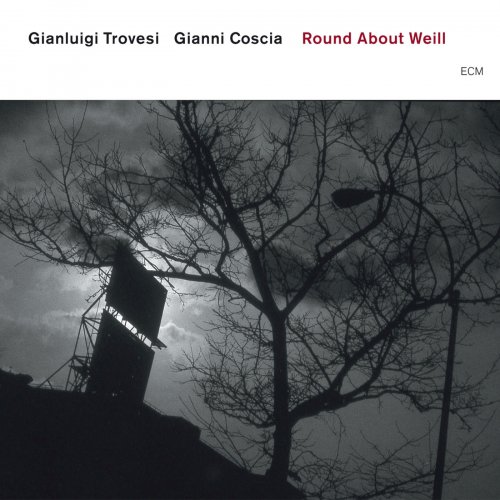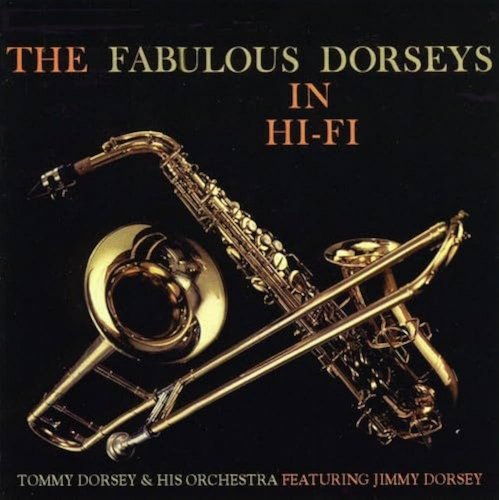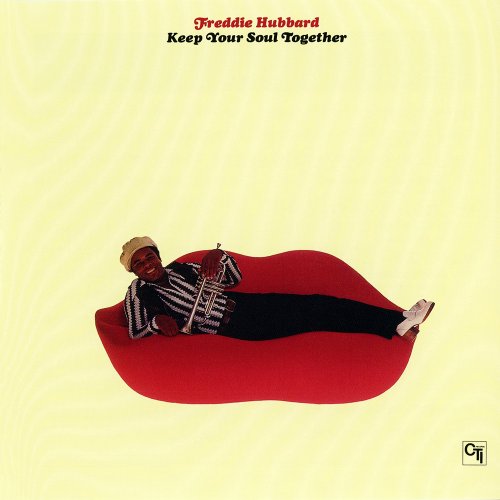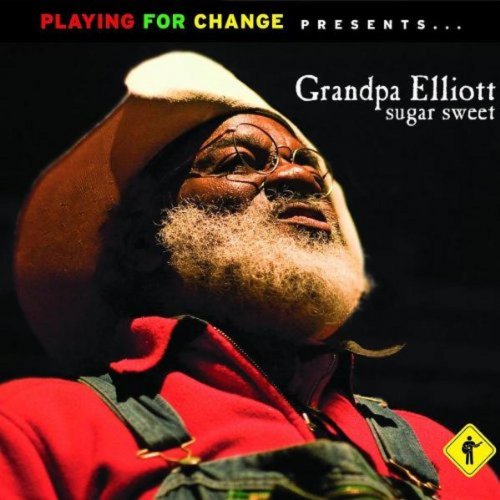Gianni Coscia, Gianluigi Trovesi - Round About Weill (2005)

Artist: Gianni Coscia, Gianluigi Trovesi
Title: Round About Weill
Year Of Release: 2005
Label: ECM
Genre: Jazz, Avant-Garde, Modern Creative
Quality: FLAC (tracks) / MP3 320 Kbps
Total Time: 01:08:09
Total Size: 309 Mb / 178 Mb
WebSite: Album Preview
Tracklist: Title: Round About Weill
Year Of Release: 2005
Label: ECM
Genre: Jazz, Avant-Garde, Modern Creative
Quality: FLAC (tracks) / MP3 320 Kbps
Total Time: 01:08:09
Total Size: 309 Mb / 178 Mb
WebSite: Album Preview
1. Dov´è la città? 06:10
2. Ach, bedenken Sie, Herr Jakob Schmidt (Havanna Song) 02:04
Die Dreigroschenoper - Suite (Kurt Weill)
3. Tango 04:27
4. Improvvisamente 04:16
5. Divagazioni su "Youkali" 02:51
6. Mahagonny, Scene 6 1:53
7. Ein Taifun! ...Tifone? No, pioggerella! 02:08
8. Lieben 03:31
9. Boxen 02:04
10. Round About Weill I / Denn wie man sich bettet, so liegt man 03:13
11. Mahagonny, Scene 13 02:17
12. Essen 03:34
13. Round About Weill II 04:51
14. Tief in Alaskas schneeweißen Wäldern 01:46
15. Ach, bedenken Sie, Herr Jakob Schmidt (Havanna Song), var. 02:37
16. Mahagonny, Scene 4 02:18
Mahagonny Songspiel (Kurt Weill)
17. Finale: "Dieses ganze Mahagonny" 01:29
Aufstieg und Fall der Stadt Mahagonny (Kurt Weill)
18. Alabama Song 05:33
19. Mahagonny, Scene 6, var. 01:11
20. Alabama Song, var. 01:38
21. Cumparsita Maggiorata 04:06
22. Tristezze di Fra´ Martino 01:56
Aufstieg und Fall der Stadt Mahagonny (Kurt Weill)
23. Denn wie man sich bettet, so liegt man (var.) 02:16
Performers:
Gianluigi Trovesi, Piccolo, Alto Clarinets
Gianni Coscia, Accordion
Master clarinetist Gianluigi Trovesi and kindred accordionist Gianni Coscia pick up where they left off on Round about Offenbach, this time giving Kurt Weill (1900-1950) a treatment such as only they can realize. The two friends make Weill their own. Or, more precisely, they make their own Weill, stirring the pot until flavors become one delicious amalgamation. Their doing so is not without precedent. Weill himself found, and forged, art wherever he went, caring not for petty distinctions between the raw and the cooked. From Berlin to Broadway, to borrow from the title of Foster Hirsch’s biography, Weill left a vivid trail of reinvigoration. Yet Trovesi and Coscia do more than pick up the pieces left in his wake, adding as they do a slurry of original counterparts along the way. The latter, in fact, strut with as much panache as the one in whose name they were fashioned.
Turning to the duo’s contributions first, we find the playful romp—replete with harrumphing bellows and Trovesi’s nimble steps—of “Dov’è la città?” setting a tone of variation and complexity. Like so much of what follows, it is a constantly evolving organism, wearing and casting off styles like quick-change artists. Moods range from the profundity of a Górecki string quartet (“Improvvisamente”) and exploratory fugue of “Ein Taifun! … Tifone? No, pioggerella!” to the provocative slants of “Boxen” and the bifurcated title homage. Trovesi manages to navigate every maze-like turn Coscia mortars into being. As with seasoned actors, not a single gesture is out of place in their comportment, as each trades lines with the other in a match of wits so even that it would go on forever without the limits of human attention cutting away the edges.
That said, this is really Coscia’s album through and through. He activates the air as a film projector lights a screen, pulling the dead into life and the living into dreams. Whether riding the effortless wave of “Tango Ballade” (from The Beggar’s Opera) or flipping the coin of excitement and reverie that is “Alabama Song,” his elaborations sing like new. Yet the alpha and omega of the program, and of the duo’s performance thereof, is Weill’s The Rise and Fall of the City of Mahagonny. Like the fugitives with which the satirical opera concerns itself, the music herein is resourceful, self-confident, and always heading toward pandemonium. In these scenes, Trovesi and Coscia swap places with telepathic ease, mapping gypsy jazz motifs as comfortably as balladic impulses. Like the album’s penultimate interlude, which bonds “Cumparsita Maggiorata” (by tango pioneer Gerardo Matos Rodríguez) with the traditional “Tristezze di Fra’ Martino,” these instrumental thespians dip into nostalgia only sparingly, so that the dramaturgy at hand can spring forth as if for the first time.
Turning to the duo’s contributions first, we find the playful romp—replete with harrumphing bellows and Trovesi’s nimble steps—of “Dov’è la città?” setting a tone of variation and complexity. Like so much of what follows, it is a constantly evolving organism, wearing and casting off styles like quick-change artists. Moods range from the profundity of a Górecki string quartet (“Improvvisamente”) and exploratory fugue of “Ein Taifun! … Tifone? No, pioggerella!” to the provocative slants of “Boxen” and the bifurcated title homage. Trovesi manages to navigate every maze-like turn Coscia mortars into being. As with seasoned actors, not a single gesture is out of place in their comportment, as each trades lines with the other in a match of wits so even that it would go on forever without the limits of human attention cutting away the edges.
That said, this is really Coscia’s album through and through. He activates the air as a film projector lights a screen, pulling the dead into life and the living into dreams. Whether riding the effortless wave of “Tango Ballade” (from The Beggar’s Opera) or flipping the coin of excitement and reverie that is “Alabama Song,” his elaborations sing like new. Yet the alpha and omega of the program, and of the duo’s performance thereof, is Weill’s The Rise and Fall of the City of Mahagonny. Like the fugitives with which the satirical opera concerns itself, the music herein is resourceful, self-confident, and always heading toward pandemonium. In these scenes, Trovesi and Coscia swap places with telepathic ease, mapping gypsy jazz motifs as comfortably as balladic impulses. Like the album’s penultimate interlude, which bonds “Cumparsita Maggiorata” (by tango pioneer Gerardo Matos Rodríguez) with the traditional “Tristezze di Fra’ Martino,” these instrumental thespians dip into nostalgia only sparingly, so that the dramaturgy at hand can spring forth as if for the first time.
![RAS - Rød i Blå (2025) [Hi-Res] RAS - Rød i Blå (2025) [Hi-Res]](https://www.dibpic.com/uploads/posts/2025-12/1765847447_s09xuo23tcu1a_600.jpg)

![Koldo Munné & 1520's Ensemble - Live at Jamboree Live Music (2025) [Hi-Res] Koldo Munné & 1520's Ensemble - Live at Jamboree Live Music (2025) [Hi-Res]](https://www.dibpic.com/uploads/posts/2025-12/1765846749_ck2b0xbsb8jna_600.jpg)



![Mark Northam - More Music From The Pixar Films For Solo Piano (2025) [Hi-Res] Mark Northam - More Music From The Pixar Films For Solo Piano (2025) [Hi-Res]](https://img.israbox.com/img/2025-12/17/qc8ci6ocl25zt4m9ojnjn3k2k.jpg)

